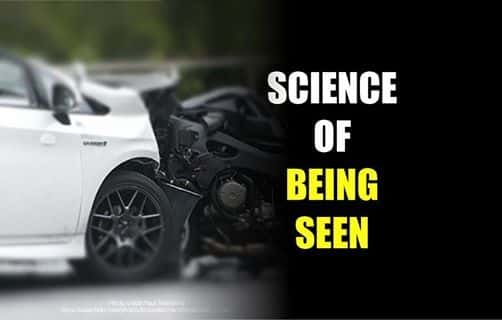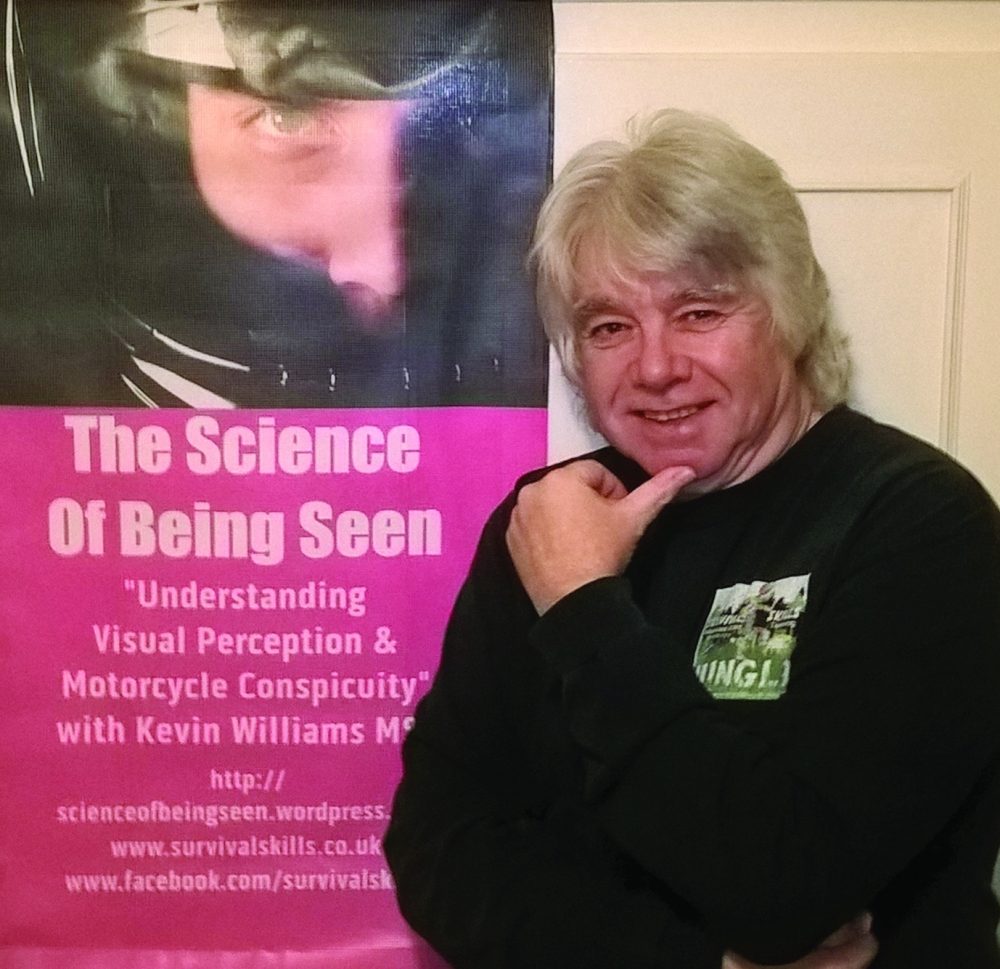SMIDSY – there’s more than one driver error
Thanks to decades of ‘Think Bike’ style campaigns which in essence tell drivers to “look harder” or “look longer” for motorcycles it’s not surprising that most riders believe that the SMIDSY results from poor driving skills and specifically from “not looking properly”. This advice and these beliefs have arisen from ‘post-hoc’ analyses of crashes. That is, they tell us WHAT happened and we find that out by starting at the end point of the collision, and working backwards till we find the error. It’s pretty straightforward in the case of the SMIDSY; the driver didn’t see the bike.
But post-hoc analyses don’t tell us two things:
- how OFTEN the crash occurs – in fact, with 30+ million active drivers and between 1 and 2 million active motorcyclists in the UK, serious collisions are remarkably rare – just over 2000 in total in 2017. The vast majority of drivers see the vast majority of bikes – we just notice the ones who don’t see us.
- WHY the driver failed to see the bike – for that we need to start at the other end of the crash and ask why an everyday interaction went wrong.
Last time I talked about the ‘looked but COULD NOT SEE’ issue, where the motorcycle is simply not where it could be seen. But what about those events where reconstruction suggests that bike was actually in a place it could be seen?
In fact, there’s a chain of perceptual events to be completed between the driver looking and the bike being seen. The ‘Looked But Failed To See’ problem can result from a breakdown at any of the stages:
- firstly, the driver has to look – if he / she doesn’t look, the driver will not see the motorcycle
- secondly, the bike has to be where it can be seen when the driver looks – if not, the bike is not visible and the driver cannot see the motorcycle
- thirdly, the driver has to look and perceive the motorcycle – if the motorcycle is not perceived, the driver will not see the motorcycle
- fourthly – and this one is hot off the press, straight out of a paper published late in 2019 – the driver has to look, perceive the motorcycle and then retain that knowledge right through the manoeuvre – if the driver forgets that he or she saw the motorcycle, the manoeuvre will be performed as though the driver did not see the motorcycle
- fifth and last, if the driver perceives the motorcycle, the driver has to assess speed and distance correctly – if the driver misjudges either, the result is likely to be a faulty decision to turn and an unsafe manoeuvre
The proportions of the different errors may surprise you.
‘Did not look’ falls into the smallest segment of the chart, and includes collisions where drivers are using mobile phones. An IAM report entitled ‘Licensed to skill: contributory factors in road accidents: Great Britain 2005 – 2009’ looked at over 700,000 items of official crash data from the UK and found that ‘driver using mobile phone’ was the cause of 0.8% of fatal crashes, and just 0.2% of all injury crashes. I should point out that these are crashes involving ALL vehicle types, and that given the huge increase in smartphone use the figures may be outdated, but the inference is that the crash rate between motorcycles and drivers using a phone is almost certainly much lower than most riders believe.
In fact, the three main factors are:
- the driver looked but the bike COULD NOT be seen – between one-fifth and one-quarter of all collisions
- the bike was visible, and the driver ‘Looked But FAILED to see’ – around one-third of all collisions *
- the bike was seen and the driver ‘looked, saw but MISJUDGED speed and distance’ – around one-third of all collisions
(This total is likely to include the newly proposed ‘looked, saw but FORGOT error’).
From our perspective as riders, it’s important to understand that each error is different, with different causes and different possible solutions. Treating them all as a ‘driver didn’t look properly’ issue has held back our understanding of collisions between cars and motorcycles for over forty years. It’s time to move our understanding and our strategies for dealing with these crashes forward.
Kevin Williams / Survival Skills Rider Training www.survivalskills.co.uk
(c) K Williams 2020
The Science Of Being Seen – the book of the presentation £9.99 plus P&P and available now from: www.lulu.com
The ‘Science Of Being Seen’ is a presentation created in 2011 for Kent Fire and Rescue’s ‘Biker Down’ course by Kevin Williams. Biker Down is now offered by over half the nation’s FRSs as well as the UK military, and many deliver a version of SOBS. Kevin personally presents SOBS once a month for KFRS in Rochester. He toured New Zealand in February 2018 delivering SOBS on the nationwide Shiny Side Up Tour 2018 on behalf of the New Zealand Department of Transport.
Find out more here: https://scienceofbeingseen/wordpress.com





